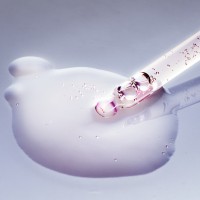How to take care your baby body
Taking care of the baby's body is always a topic of interest in the first months of life, in which skin care and umbilical hygiene for newborns are things that parents need to pay special attention to. Baby skin care needs to be done meticulously and carefully in every area of the body because the skin of babies in this age group is usually quite thin and sensitive.
1. Seborrheic Dermatitis
Seborrheic dermatitis in the scalp area, popularly known as buffalo dung plaque, although the lesions caused by seborrheic dermatitis look unsightly, they are not harmful to the health of the child. Seborrheic dermatitis is quite common in infants aged 0 to 1 year. Children often have patches of dry, flaky skin that look like dandruff or in more severe cases may see large, thick, shiny yellow patches.
Seborrheic dermatitis can appear any time from two weeks to three months postpartum and usually clears up on its own many months later without treatment. After 6 to 7 months of age, this disease will no longer be a serious problem for the baby.
The best way to clean the scalp is to bathe your baby daily with mild shampoos. Try massaging your baby's head with your fingers or a soft cloth to get the patches of scalp flake off. Before rinsing off the soap with water, brush your child's hair with a soft amount to help remove dry patches from sticking to the hair.
In fact, seborrheic dermatitis can go away on its own without treatment, but parents should not be subjective to avoid adversely affecting the health of the child. When the scalp patches spread or get worse, parents should take the child to see a doctor for examination and treatment. In this case, your doctor may prescribe specific shampoos or cortisone creams.
2. Baby nail care
Baby nails are usually softer and more malleable than adult nails. However, young children's fingernails are really sharp, so babies often scratch their faces or their caregivers without good control of their limbs.
Newborns' nails grow very quickly and they need to be trimmed often, maybe several times a week. Meanwhile, toenails usually don't need too much care.
Press soft tissue away from the nail to avoid injuring the skin and hold the child's hand and nail clipper firmly. If you are nervous while doing it, you may accidentally cut your child's finger instead of a fingernail.
3. Clean baby's navel
After birth, the baby's umbilical cord will be clamped and cut close to the base of the umbilical cord, causing the umbilical cord stump to wilt and fall off to form the umbilical cord.
Cleaning the umbilical cord for the baby in the first days after birth should ensure that the umbilical cord stump is dry and clean. The extra umbilical cord will dry out and fall off on average after 10 to 21 days. They will then leave a small wound on the abdomen and take a few days to fully heal. When the umbilical cord falls off, some bleeding can be observed. This is completely normal, parents should not be too worried.
When putting on a diaper, the top edge should be folded down below the abdomen so that the umbilical foot does not come into contact with the baby's waste products including urine and feces. Similarly, limit exposure to water until the belly button falls off completely. These measures play a role in preventing umbilical cord infections in infants.
In warm weather, infants should only be dressed in diapers and light blazers, which allow air to circulate and facilitate umbilical cord drying. Avoid letting your baby wear body-hugging clothes like a bodysuit until the belly button falls off completely.
Today, doctors do not recommend using alcohol to rub the umbilical cord, because research shows that the healing process is faster without it. To keep the umbilical cord clean, parents should clean it with clean gauze pads. Symptoms of an umbilical cord infection include swelling or redness of the skin at the base of the cord, pus discharge, and a high fever. To avoid this situation, parents can equip themselves with knowledge about cleaning the baby's umbilical cord and how to bathe the baby safely.
4. Circumcision in boys
All you need to do to get circumcised is to keep the foreskin area clean with soap and water every time you bathe your baby. For circumcised or uncircumcised boys, it is not advisable to bathe in tubs with too much soap, as these can irritate and dry out the skin of the penis.
During the first days after circumcision, the penis may be slightly swollen and yellow tissue may be observed. This is a sign that the penis is in good health.
The circumcision area is rarely infected. Signs of infection include persistent redness, edema of the tip of the penis, and a yellowish discharge wound at the end of the penis. When detecting one of these signs, parents should take the child to see a doctor immediately.
5. Caring for uncircumcised babies
When cleaning or bathing an uncircumcised baby boy, parents should not try to pull the foreskin or clean underneath. What to do is to clean the outside of the penis, similar to when taking care of other skin areas on the penis
Depending on the baby, it may take weeks, months or even years for the foreskin to separate from the penis and become more elastic.
6. Vaginal care for girls
Every girl's vaginal area should be cleaned with a soft, clean, damp cloth while wearing diapers and in the shower. When cleaning, pay attention to wipe from front to back to avoid spreading bacteria from the anus to the baby's vagina. Be sure to clean gently and thoroughly both in the skin folds and on the sides of the groin area.
7. Skin care in the external genitalia
Regardless of whether it's a boy or a girl, if the organ is swollen and red, you can see it right away. Girls may have some clear white or bloody discharge. All of these are normal during the first few weeks of life because the baby receives some hormones from the mother during pregnancy. If these symptoms do not go away after 6 weeks of age, parents need to take the baby to see a doctor for monitoring and treatment.
Taking care of a newborn's body is not easy, especially for first-time parents. Children can easily get diseases when their bodies are weak and their immune systems are not as mature as adults. Therefore, when seeing children with abnormal signs, parents need to go to medical centers for examination and treatment.
Related Posts
How to Choose Skin-Friendly Beauty Products
31.10.2022
8 Good Habits to take care of Acne skin
28.10.2022
10 Foods That Increase Your Body's Keratin
27.10.2022
Top 10 home remedies for glowing skin
27.10.2022
4 Steps to Skincare your Body
26.10.2022






